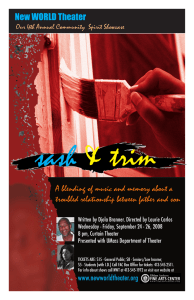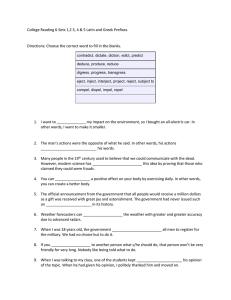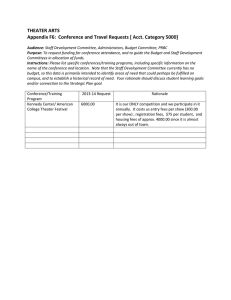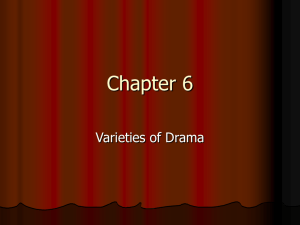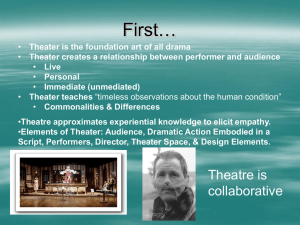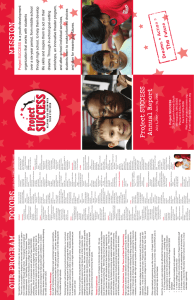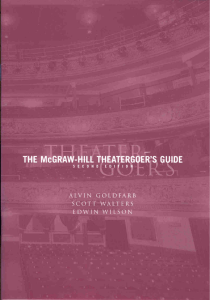Remember
advertisement
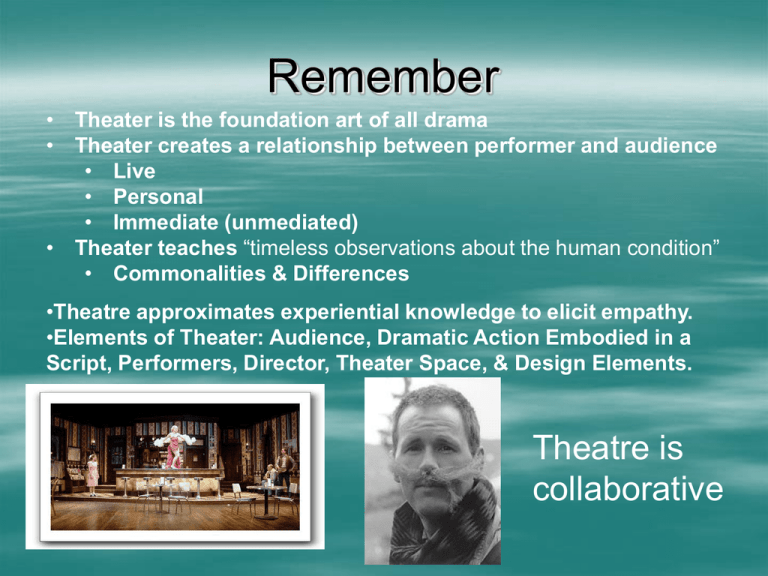
Remember • Theater is the foundation art of all drama • Theater creates a relationship between performer and audience • Live • Personal • Immediate (unmediated) • Theater teaches “timeless observations about the human condition” • Commonalities & Differences •Theatre approximates experiential knowledge to elicit empathy. •Elements of Theater: Audience, Dramatic Action Embodied in a Script, Performers, Director, Theater Space, & Design Elements. Theatre is collaborative Theatre’s Origins Children’s Play Storytelling Ritual Ancient Greece – 5th Century BCE Polytheistic Artistic Increasingly commercial & literate Democratic – Demes – Tribes Misogyny City Dionysia Celebration of Dionysus Three Trilogies produced, each with a Satyr play afterward Theatron Skene Parados Orchestra Mechane Ekkyklema City Dionysia Actors wore masks – played several parts Chorus (audience’s representative on stage) danced in orchestra Aulis was a double reeded flute that was played Audience knew stories Know the difference between Story and Plot City Dionysia 3 main tragedians – Aeschylus, Sophocles, Euripides Comedy came later Old Comedy was satirical in nature – Aristophanes - added parabasis New Comedy romantic and domestic farce Aristotle’s poetics 335 BCE - 6 elements – Plot, Character, Theme, Language, Music, Spectacle
